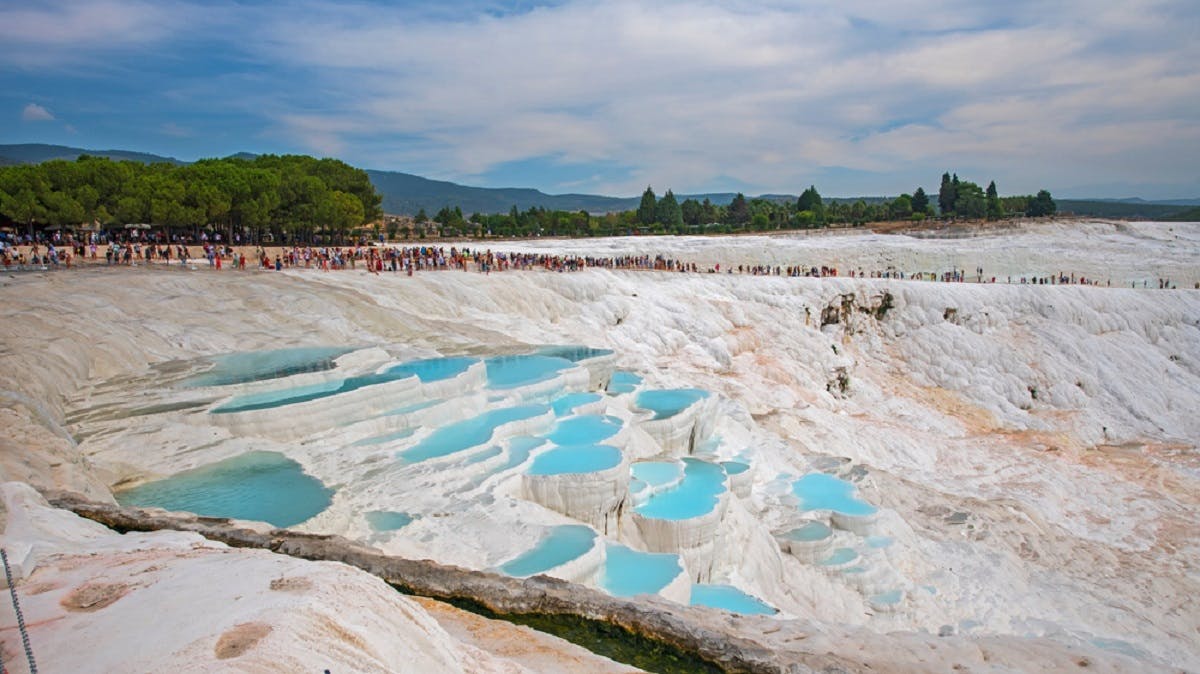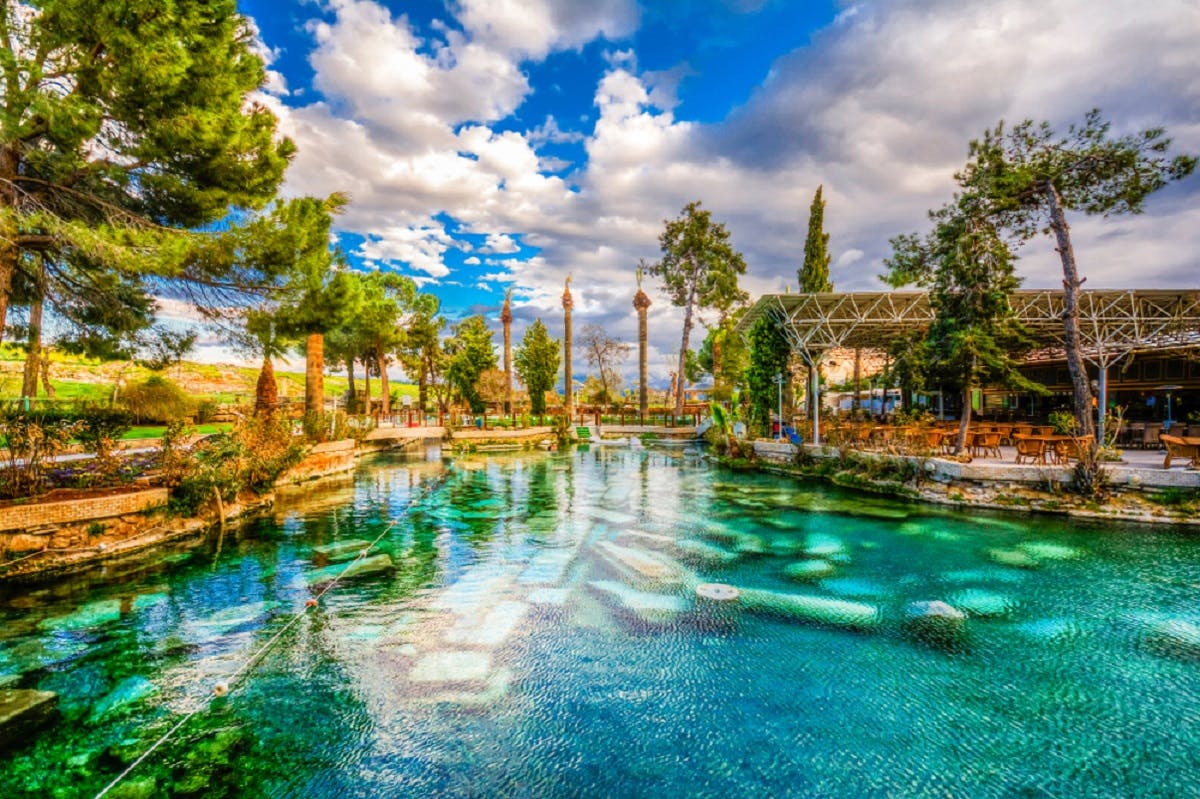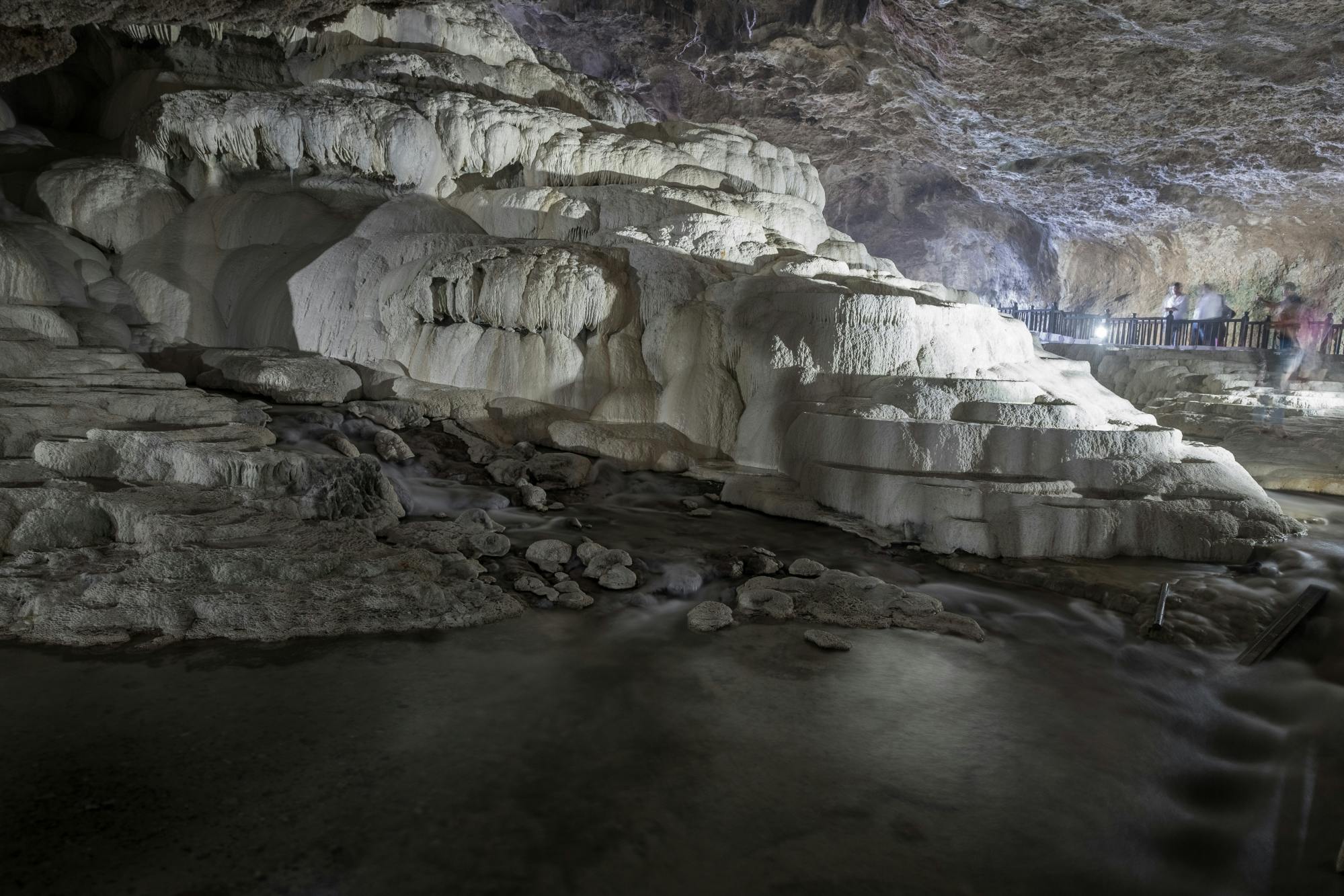Hierapolis was an ancient city located in modern-day Turkey, near the city of Denizli. It was founded around 190 BC by the King of Pergamon, Eumenes II, and was built on a natural hot spring. The city was named after the Greek words “hieros” and “polis,” which together mean “sacred city.”
The hot springs of Hierapolis were believed to have healing properties and attracted visitors from all over the ancient world. The city became a popular destination for those seeking medical treatment, as well as for those who came to enjoy the warm waters and stunning scenery.
One of the most impressive features of Hierapolis was its extensive system of terraced hot springs and baths. The largest and most impressive of these was the Great Bath, which was over 70 meters long and 30 meters wide. It was fed by hot springs that poured water into it at a rate of around 500,000 liters per day.
Hierapolis was also known for its impressive Roman theater, which could seat up to 12,000 people. It was built in the 2nd century AD and is one of the best-preserved ancient theaters in the world. The city also had a large necropolis, or cemetery, which contained thousands of tombs and sarcophagi.
In addition to its thermal baths and impressive architecture, Hierapolis was also an important center of Christianity in the early centuries AD. The apostle Philip was said to have preached in the city, and St. Paul mentioned it in his letters to the Colossians. The city became a bishopric in the 4th century AD and continued to be an important religious center for centuries.
Today, the ruins of Hierapolis are a UNESCO World Heritage Site and attract thousands of visitors each year. The hot springs are still active and visitors can bathe in the warm waters, just as the ancient Greeks and Romans did over two thousand years ago. The city’s Roman theater and other ancient ruins are also popular tourist attractions, providing a glimpse into the rich history and culture of this once-great city.










